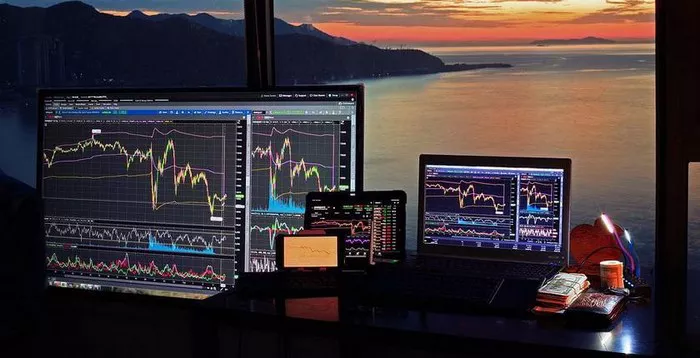In the fast-paced world of financial markets, where new instruments emerge and old ones fade into obscurity, Eurodollar futures stand out as a stalwart of derivatives trading. Despite the evolution of global finance and the emergence of new interest rate benchmarks, Eurodollar futures continue to play a significant role in managing interest rate risk and speculating on future interest rate movements. In this comprehensive article, we’ll explore the enduring relevance of Eurodollar futures, examining their history, mechanics, and current status in the financial landscape.
The Legacy of Eurodollar Futures
Eurodollar futures have a storied history dating back to the early 1980s when they were introduced by the Chicago Mercantile Exchange (CME). Originally created to provide market participants with a tool for hedging against fluctuations in U.S. dollar interest rates outside the United States, Eurodollar futures quickly gained popularity and became one of the most actively traded futures contracts globally.
Understanding Eurodollar Futures
Eurodollar futures are financial contracts that derive their value from the interest rate paid on U.S. dollar-denominated deposits held in banks outside of the United States. Despite the name, Eurodollar futures are not directly linked to the euro currency but instead represent expectations about the future direction of U.S. dollar interest rates.
These standardized futures contracts are traded on the CME Globex electronic trading platform and represent the three-month U.S. dollar LIBOR (London Interbank Offered Rate) for various future expiration dates. For example, the Eurodollar futures contract for March 2025 represents the interest rate for three-month U.S. dollar deposits starting in March 2025.
Continued Relevance in a Changing Landscape
In recent years, the financial industry has witnessed significant changes, including the transition away from LIBOR as the benchmark for short-term interest rates. Despite these changes, Eurodollar futures remain highly relevant for several reasons:
1. Liquidity and Trading Volume
Eurodollar futures are among the most liquid and actively traded futures contracts in the world. Their deep liquidity and high trading volumes provide market participants with ample opportunities to enter and exit positions efficiently, making them a preferred instrument for managing interest rate risk.
2. Benchmark Transition Considerations
While the transition away from LIBOR presents challenges for financial markets, Eurodollar futures continue to serve as a valuable tool for managing interest rate risk during this period of uncertainty. Market participants can use Eurodollar futures to hedge against fluctuations in short-term interest rates and navigate the transition to alternative benchmarks, such as SOFR (Secured Overnight Financing Rate).
3. Speculative Trading Opportunities
Eurodollar futures also attract speculative traders seeking to profit from changes in interest rate expectations and yield curve dynamics. The versatility of Eurodollar futures contracts, with multiple expiration dates extending several years into the future, provides ample opportunities for traders to implement various trading strategies based on their market outlook and risk appetite.
Where to Trade Eurodollar Futures
Eurodollar futures are traded on the CME Group’s electronic trading platform, CME Globex. Market participants can access Eurodollar futures trading through various channels, including:
- Online brokerage platforms
- Direct market access (DMA) platforms
- Full-service brokerage firms
- Institutional trading desks
Strategies for Trading Eurodollar Futures
Trading Eurodollar futures requires a thorough understanding of interest rate dynamics and effective trading strategies. Here are some common strategies employed by traders in the Eurodollar futures market:
1. Yield Curve Trades
Yield curve trades involve taking positions based on expectations about changes in the shape and slope of the yield curve. Common yield curve trading strategies include:
Flattener/Steepener Trades: Betting on changes in the slope of the yield curve by taking positions that profit from a flattening or steepening of the curve.
Butterfly Spreads: Constructing positions to profit from specific changes in the shape of the yield curve, typically involving three Eurodollar futures contracts with different expiration dates.
2. Interest Rate Spread Trades
Interest rate spread trades involve taking positions in different Eurodollar futures contracts to capitalize on changes in interest rate differentials. Common interest rate spread trading strategies include:
Calendar Spreads: Taking simultaneous long and short positions in Eurodollar futures contracts with different expiration dates to profit from changes in the yield curve.
Intercommodity Spreads: Trading the price differential between Eurodollar futures and other interest rate futures contracts, such as Treasury futures or Fed Funds futures.
3. Directional Trading
Directional trading strategies involve taking outright long or short positions in Eurodollar futures contracts based on expectations about future interest rate movements. Common directional trading strategies include:
Rate Hike/Cut Trades: Taking positions based on expectations about future interest rate hikes or cuts by central banks, such as the Federal Reserve.
Trend Following: Following trends in Eurodollar futures prices and taking positions in the direction of the prevailing trend based on technical analysis indicators.
Conclusion
Eurodollar futures continue to play a vital role in managing interest rate risk, providing liquidity, and offering trading opportunities for market participants worldwide. Despite the evolution of financial markets and the transition away from LIBOR, Eurodollar futures remain highly relevant due to their deep liquidity, trading volume, and versatility. By understanding the mechanics of Eurodollar futures, employing effective trading strategies, and staying informed about interest rate dynamics, investors can navigate this dynamic market with confidence and capitalize on opportunities in a rapidly changing financial landscape.


